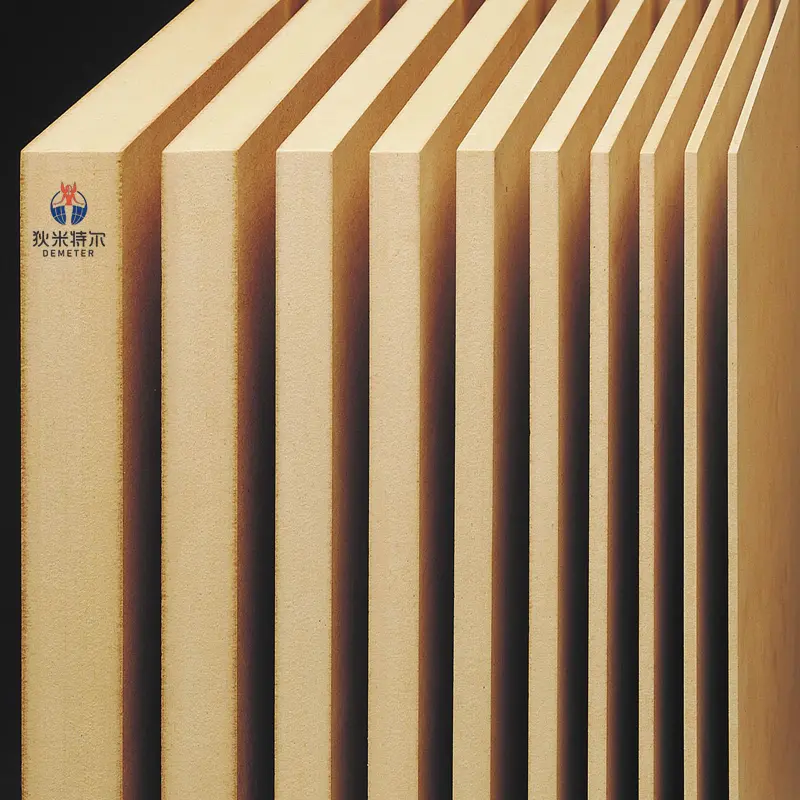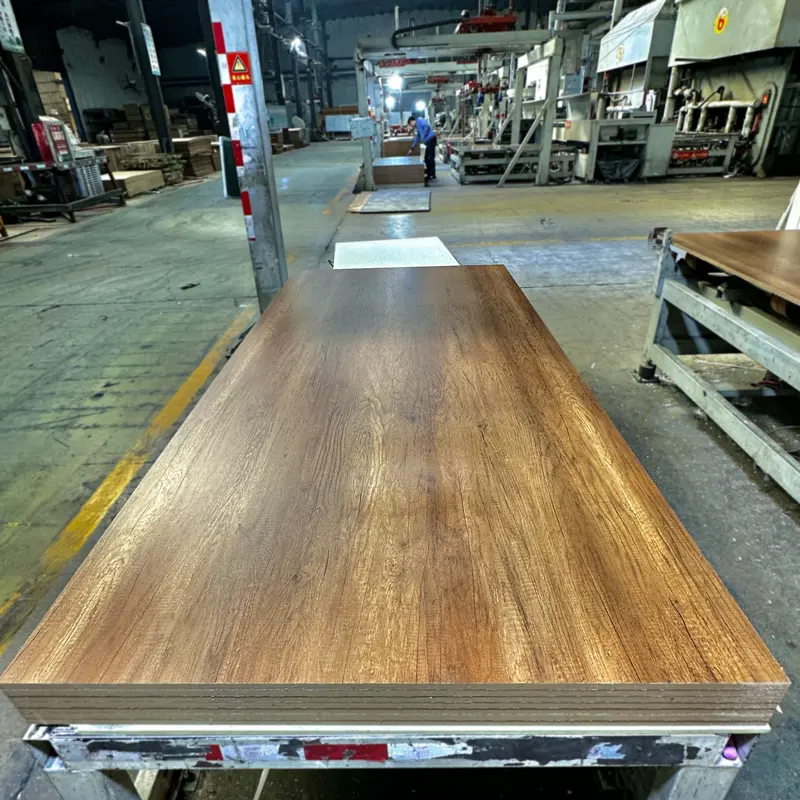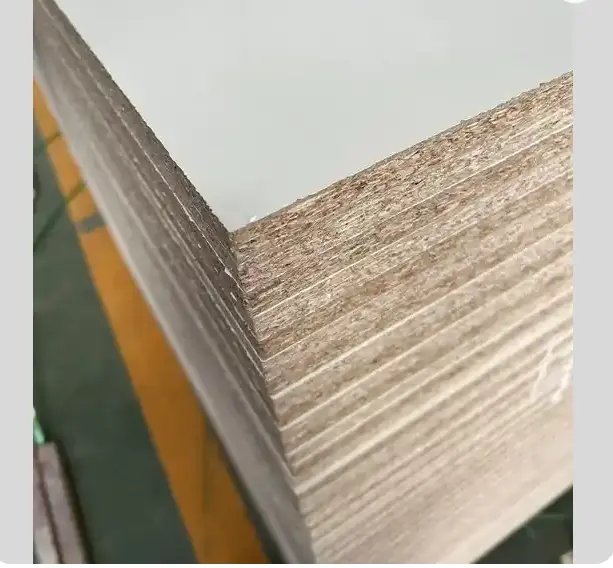Particle board furniture often gets a bad rap, but is it really as bad as people say? This article dives deep into the world of particle board, comparing it to solid wood and plywood, exploring its pros and cons, and revealing the truth about its lifespan and uses. If you’re wondering whether particle board furniture is a smart choice for your home, keep reading – this guide will show you everything you need to know to make an informed decision.
1. What Exactly Is Particle Board? Unveiling the Engineered Wood
Particle board, often misunderstood, is a type of engineered wood product. Unlike solid wood that comes directly from trees, particle board is made by combining wood chips, sawdust, or wood particles together with a resin binder. This mixture is then pressed and compressed under heat and pressure to form panels. Think of it as a resourceful way to use wood waste products from mill operations and other wood products manufacturing.
The process typically starts with sourcing raw material like wood chips from various types of wood, often off-cuts and by-products from lumber mills. These wood particles are carefully selected, sometimes even refined into finer particles for specific applications. The resin, which acts like a glue to hold everything together, can vary depending on the intended use of the particle board. Phenolic resin is a common type. Once the particles are then dried and mixed with the resin, they are laid out in a mat and sent through a press. This press uses immense heat and pressure to harden the glue and form a dense, solid panel. The result is a board is an engineered wood that’s denser and more uniform than conventional wood in many ways.

Alt: Close-up of raw particle board showing wood particle texture.
2. Particle Board vs. Solid Wood: Decoding the Key Differences for Furniture
When choosing furniture, the age-old debate of particle board vs solid wood often arises. Understanding the fundamental differences is key to making the right choice for your needs and budget. Solid wood, as mentioned, is natural wood directly from trees. It’s known for its strength, durability, and natural beauty. Think of classic, amish-crafted hardwood furniture – that’s solid wood at its finest.
In contrast, particle board furniture is constructed using the engineered wood panels we discussed. The core difference lies in the material composition and construction. Solid wood is, well, solid. Particle board, being made of wood chips and resin, has a different internal structure. This difference leads to variations in strength, weight, appearance, and price. Generally, solid wood is significantly stronger and heavier, and it often boasts a richer, more natural aesthetic. However, it also comes with a lower cost alternative in particle board, which can mimic the look of wood, especially when finished with a wood veneer or laminate. The choice between them often boils down to balancing budget with desired durability and aesthetic.
3. What are the Pros of Particle Board Furniture? Exploring the Advantages
Despite its sometimes negative reputation, particle board furniture offers several compelling advantages, especially when cost is more important than strength and appearance. One of the biggest pros and cons analysis for particle board starts with its affordability. Because it’s made from waste products and is manufactured in an efficient process, particle board is significantly cheaper to produce than solid wood or even plywood. This translates to lower cost furniture, making it accessible to a wider range of consumers.
Another advantage is its uniformity. Particle board is remarkably uniform than conventional wood. It lacks knots and grains, which can make it a smoother surface for veneers, laminates, and paint finishes. This uniformity also makes it dimensionally stable, meaning it’s less likely to warp or split compared to natural wood in fluctuating humidity. Furthermore, particle board makes it easier to create consistent colours and finishes, especially when using melamine coatings. This consistency is highly valued in mass-produced furniture. For projects where budget is a primary concern and a uniform, smooth surface is desired, particle board furniture is a practical and economical choice for furniture.

Alt: Close-up of melamine-faced particle board with wood grain texture.
4. What are the Cons of Particle Board Furniture? Addressing the Drawbacks
While particle board furniture has its advantages, it’s crucial to be aware of the cons of particle board as well. One of the primary drawbacks is its lower strength and durability compared to solid wood and even plywood. Particle board is prone to sagging or breaking under heavy loads. It doesn’t hold screws and nails as well as solid wood, which can affect the furniture’s structural integrity over time. This significant disadvantage means particle board furniture is less suitable for heavy-duty use or pieces that need to withstand a lot of wear and tear.
Another major concern is particle board is prone to damage from moisture. Unlike solid wood which can be somewhat water resistance, particle board is highly susceptible to expansion and discoloration from moisture. If particle board gets wet, it can swell, warp, and even crumble. This susceptibility to expansion and discoloration from moisture absorption makes it a poor choice for furniture in damp environments or for pieces that are likely to be exposed to spills. While coatings and sealers can improve water resistance to some extent, they don’t eliminate the risk entirely. Therefore, particle board furniture generally requires more careful handling and is less forgiving than solid wood when it comes to moisture exposure.
5. How Long Does Particle Board Furniture Actually Last? Understanding Lifespan
The lifespan of particle board furniture is a common question, and the answer largely depends on how well it’s made, how it’s used, and how well it’s cared for. Generally, particle board furniture is not designed to last as long as solid wood furniture. Solid wood pieces, especially amish-crafted hardwood furniture, can be enjoyed and passed down from generation to generation, lasting for decades or even centuries. In contrast, particle board furniture typically has a shorter lifespan.
With proper care and in ideal conditions (dry environment, not overloaded), particle board furniture can last for a reasonable time, perhaps 5-10 years, or even longer. However, it’s unlikely to become a family heirloom. If you use the furniture gently, avoid exposing it to moisture, and don’t overload it, you can maximize its lifespan. However, if you are looking for furniture that will last for decades and can withstand heavy use and potential moisture exposure, solid wood is undoubtedly the better choice. Particle board furniture is often seen as a more temporary or budget-friendly option, likely to be replaced more often than solid wood pieces. The longevity of particle board furniture is typically 12-24 times less than solid wood furniture, which can last 1-2 times generations.
6. Examples of Particle Board in Everyday Items: Where is it Used?
Particle board is a versatile material and you might be surprised by how many places you encounter examples of particleboard in your daily life. It’s widely used in furniture, particularly ready-to-assemble (RTA) furniture like bookshelves, desks, and cabinets. Many kitchen cabinets and wardrobes, especially in modern, budget-friendly designs, utilize particle board for their construction. The smooth, uniform surface of particle board makes it ideal for melamine faced board, which is commonly used in cabinet doors and drawer fronts.
Beyond furniture, particle board also finds applications in construction. It’s often used as an underlayment for flooring, providing a smooth, level surface for carpets or laminate flooring. Particle board can also be used in interior wall panels, partitions, and even in some types of moulding. Its affordability and ease of finishing make it a popular choice for a wide range of applications where strength and moisture resistance are not paramount concerns. From home furnishings to building components, particle board is a ubiquitous material in modern life.

Alt: Stack of melamine-coated particle boards in a warehouse.
7. Particle Board vs. MDF vs. OSB: Disentangling Different Wood Products
When discussing engineered wood, it’s easy to get confused between particle board, MDF (Medium Density Fiberboard), and OSB (Oriented Strand Board). While all are wood products made by combining wood fibers with resin, they differ in their composition, manufacturing process, and properties. Understanding these differences is crucial for choosing the right material for a specific project.
MDF, or medium density fiberboard, is made from wood fibers that are broken down into even finer particles than those used in particle board. These finer particles result in a denser and more uniform material than particle board. MDF has a very smooth surface, making it excellent for painting and intricate moulding details. It’s often used for cabinet doors, drawer fronts, and decorative trim.
OSB, or oriented strand board, is made from larger, rectangular wood shavings or strands that are arranged in layers and oriented in specific directions for added strength. OSB is known for its strength and rigidity, making it a popular choice for sheathing in walls, roofs, and floors in construction. Particle board, in comparison, is generally the least dense and least strong of the three. While particle board, MDF and OSB are all engineered wood products, they are designed for different applications based on their unique characteristics. Particle board is often chosen when affordability is the primary factor, while MDF is preferred for smooth finishes and intricate details, and OSB excels in structural applications requiring strength.
8. Allentown or Amish-Crafted Hardwood? When is Particle Board a Good Choice?
The choice between particle board and amish-crafted hardwood furniture (or furniture from places like allentown, known for quality furniture stores) really depends on your priorities and how long you plan to use the furniture. If you’re looking for heirloom-quality pieces that will last for generations, solid wood, especially expertly crafted hardwood furniture, is the clear winner. These pieces are built to last, often becoming more beautiful with age, and hold their value over time.
However, if you need furniture that is functional, stylish, and budget-friendly, especially for shorter-term use or in areas where furniture might be replaced more frequently, particle board furniture is a very practical option. For example, for a first apartment, a home office setup that might change in a few years, or children’s rooms where furniture may need to be updated as they grow, particle board furniture can be an excellent solution. It allows you to furnish a space affordably without sacrificing style. It’s also a good choice for pieces where the appearance of solid wood is desired but the budget is limited, as particle board can be effectively finished with veneers and laminates to mimic the look of more expensive materials. Ultimately, consider your budget, desired lifespan, and the intended use of the furniture when deciding between particle board and solid wood options.
9. Still Not Convinced About Particle Board? Let’s Reconsider Its Versatility
If you’re still not convinced about particle board, it’s worth reconsidering its versatile material nature and the role it plays in modern manufacturing. Particle board is not just a cheap substitute; it’s a smart solution for many applications. Its uniformity and smooth surface make it an ideal substrate for melamine, veneer, and laminate finishes, allowing manufacturers to create furniture that is both attractive and affordable. The consistency of particle board also makes it easier to mass-produce furniture with consistent colors and finishes, which is essential for large-scale retail.
Furthermore, particle board is an environmentally responsible choice in some ways. By utilizing waste products like wood chips and sawdust, it reduces reliance on natural wood resources and minimizes waste from mill operations. This makes particle board a more sustainable option compared to solely using solid wood. While it may not have the prestige or longevity of solid wood, particle board serves a crucial purpose in providing affordable, functional, and aesthetically pleasing furniture and building materials for a wide range of needs. Its versatility and cost-effectiveness make it a valuable material in today’s world.

Alt: Roll of decorative melamine paper with wood grain pattern.
10. Tips for Caring for Particle Board Furniture to Extend Its Lifespan
To maximize the lifespan of your particle board furniture and keep it looking good as new, proper care is essential. The most critical factor is protecting it from moisture. Always clean up spills immediately with a dry cloth. Avoid placing particle board furniture in damp areas like bathrooms or basements unless it’s specifically designed for such environments and has a robust moisture resistant coating.
When cleaning, use a slightly damp cloth and mild cleaner, avoiding excessive water. Never soak particle board furniture or use abrasive cleaners that could damage the surface finish. For furniture with a laminate or veneer finish, use furniture polish to maintain its shine and protect the surface. Be mindful of weight limits. Avoid overloading shelves or drawers in particle board furniture to prevent sagging or breakage. Regularly check and tighten any screws or hardware to maintain structural stability. Applying a sealer to exposed edges, especially if they are not already sealed, can help improve water resistance and prevent moisture from penetrating the core. With these simple proper care steps, you can significantly extend the life and maintain the appearance of your particle board furniture.
Key Takeaways:
- Particle board is an engineered wood made from wood chips and resin, offering an affordable alternative to solid wood.
- Particle board furniture is less expensive and more uniform than solid wood, but also less durable and more susceptible to moisture damage.
- Lifespan of particle board furniture is shorter than solid wood, typically lasting 5-10 years with proper care.
- Particle board is widely used in RTA furniture, cabinets, flooring underlayment, and other applications where cost and uniformity are prioritized.
- Proper care, especially protecting from moisture, is crucial to extend the lifespan of particle board furniture.
- Consider your budget, desired longevity, and usage when choosing between particle board and solid wood furniture.
Related Reads:
- Explore our range of high-quality Melamine MDF Boards for durable and stylish furniture solutions.
- Learn more about our wholesale melamine MDF board options for your manufacturing needs.
- Discover the benefits of using Melamine Particle Board for cost-effective furniture production.
- Find the perfect decorative touch with our decorative melamine papers for various applications.
- Get the foundation right with our Raw MDF Boards, customizable to your specific requirements.
Post time: 01-22-2025











